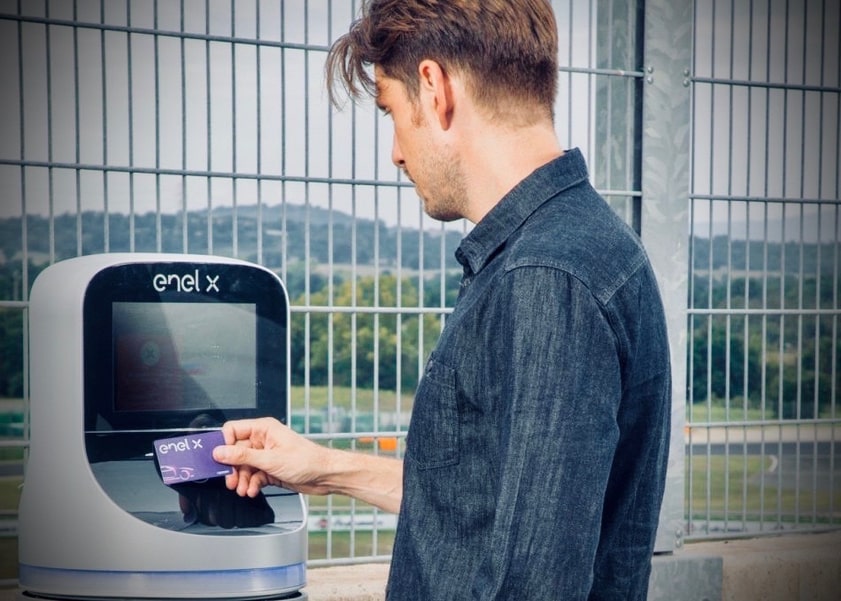The Ultimate Guide to Electric Vehicle Public Charging Pricing

Today, public charging stations are sprouting up everywhere. As of 2019, there are approximately 17,500 locations across the US that serve as public use electric vehicle charging stations. This is a rather large number, especially when you consider the ratio of gas stations to cars. There are only an estimated 168,000 gas stations compared to the 276 million vehicles that use them. However, the ratio for public charging stations 1 to 74 instead of 1 to 1600 for gas stations. And in California where over half of the EV U.S. sales are, there are currently 21,948 public electric vehicle charging stations for 655,088 EVs, which has an even more compelling ratio, 1 to 29.
If you’re an electric vehicle driver, you may find that charging your car at home or work meets the majority of your charging needs like the other 80% of current EV drivers. However, sometimes you may need to charge your electric car in public because of a long road trip or something else. Whatever the case, when you charge your electric car at a public charging station, you will have fees associated. This article will break down public EV charging stations cost.
Public charging station rates and availability may be unfamiliar to new electric vehicle owners. Fortunately, there are a number of resources where you can tell exactly where to locate an electric vehicle charging station. To find a publicly available station to charge your EV battery, you can try PlugShare or Google Maps or use EVmatch or AmpUp for peer-to-peer charging.
Public Charging Pricing Basics: Location and Timing Matters
If you are going to use a public outdoor EV charging network, you need to know that charging costs change depending on the time of day or geographic area.
The location sets the baseline cost of energy. According to EIA, the July 2019 national average for commercial electricity is only $0.11 per kWh, but the price rate ranges from $.08 per kWh in Nevada, which is low, to the highest rate of $0.19 per kWh in California. This means that because of the higher price of energy and electricity costs in that specific location, the baseline price at public charging stations in California is likely going to be higher than elsewhere in the country. State legislation and regulation determines the maximum a company can charge based on the source of the energy provided.
Even if a public charging system is only supplementing their power from electric utilities, there are still specific cost regulations that must be complied with. Regulations change depending on the law in certain states, which dictate how charging stations can structure their rates for electricity.
Public Charging Pricing Models
There are three primary public charging pricing models: (1) pay as you go, (2) monthly subscriptions and (3) free.
Some charge station network providers offer both a combination of the two, resulting in a lot of variations for electric vehicle drivers. However, the most common pricing method and the most favored by drivers is pay as you go. Still, some networks want to incentivize you with a lower rate if you are a frequent member, so the subscription method could be right for you if there is a convenient public charger that you rely on weekly.
Membership Fees
Most EV drivers do not want a monthly subscription or membership, but becoming a free member of a charging network is easy if you need to use a public station to authenticate the charge. You can download the app, signup and pay with the app by placing a credit card on file. While only some charging networks will require an initial deposit of $25, the trend is to offer guest charging so anyone can pull up and pay with a credit card without the hassle of signing up as a member.
For the networks that offer subscription memberships, the monthly rates range from $4 to $7.99.
Pay As You Go Public Charging Prices
Generally public charging station rates are based on a number of dimensions: location, time of use, length of use, and power level, which factor in the price of the commercial electricity usage. For example, California has the highest electricity rates in the country and time-of use pricing, which varies by time, weekday and season. In Pacific Gas and Electric (PG&E) territory weekday peak pricing is between 3 - 8 p.m. Furthermore, charging networks price Level 2 AC charging differently than DC charging, which also have a range of power levels from 50kW - 350 kW.
Public Charging Rates
Pricing rates can be established by the site-host owner or the EV charging network, which impacts the pricing as there are different motivations for each. For example, a site-host may want to offer free public charging to bring more customers to its retail stores or offer it as a perk to increase “dwell time.”
That said, charging “by the minute,” or per-minute costs are most commonly used, but you can also see pricing per charging session and per kWh.
When charging by the minute, charging systems will have a standardized amount of electricity that is flowing into the car. There is no guarantee about how much electrical current is flowing into your vehicle, though most stations will offer a reassurance like a "20 minute supercharge." Even a 20-minute fast charge when you are paying by the minute can add up.
Public Charging Idle Fees
Different charging networks will incentivize proper utilization by charging electric vehicle drivers for idling. These fees also vary by network and location. For example, an idle fee can range from $0.40 per-minute to $1.30 per minute.
Most networks no longer have set up fees or termination fees for members, but credit card fees vary across locations if you pay as you go.
What is the most convenient and affordable place to charge?
Charging your car at home, and paying your electric utility company for the energy you consume. The difference comes at the price of the energy itself. Kilowatts per hour refers to how many kilowatts are being pumped into the battery of the car per hour. On a home system utilizing a level 2 EV charger, a typical rate at which a vehicle consumes energy is 7.2kWh. Most plug-in electric vehicles have a capacity of 50kW, meaning a full charge on a V2 charging unit can take about 7 hours.
For example, with a monthly membership fee, one charging station network still charges $1.50/hour for level 2 charging. The average time of the charge for an electric vehicle on a level 2 system is about seven hours for a full charge. This means that a full charge with this charging network would cost you $11. When you compare this to the average cost of an EV at-home charging unit, you realize that charging at home saves you about 50%!
Furthermore, commercial electricity rates are higher than residential retail rates. Currently, paying for your energy outside of the home is a good option if you need it in a pinch, but the price you pay for charging outside of home or work is much higher than what you would pay using a high-quality, level 2 home charger. Investing in a home EV rapid charging station will save you time, be less work and be less expensive. If you drive a Tesla and want to learn more about the costs between a public charging station and a home charging station, you can read our breakdown of Tesla charging station cost.
To find out everything you need to know about at-home EV charging, check out our blog or read about our JuiceBox rapid charging stations here.







